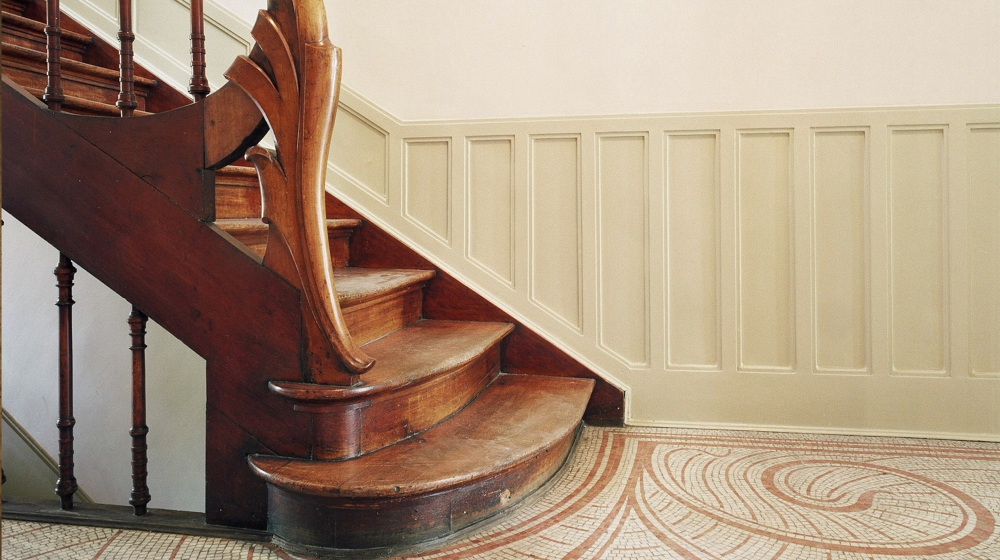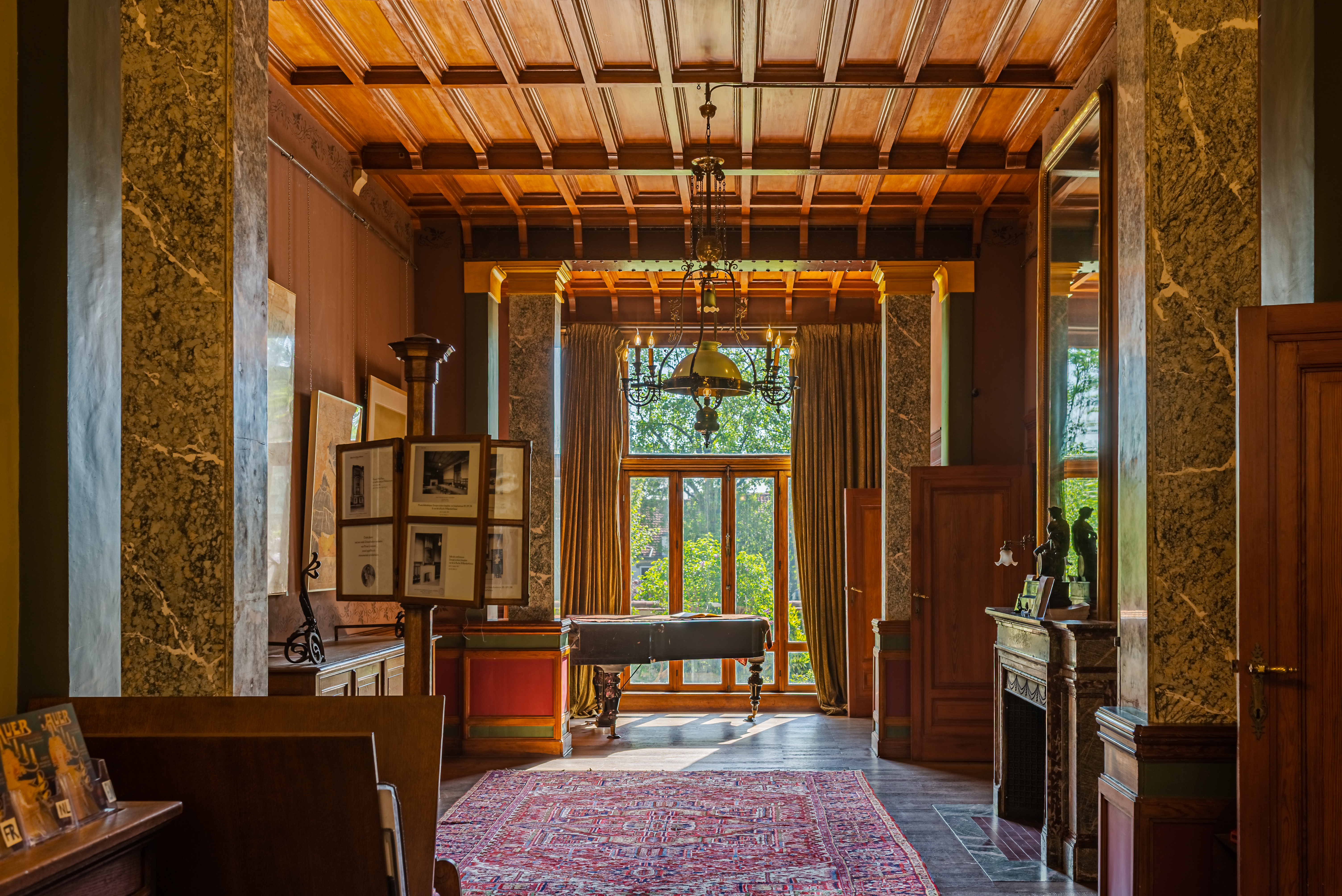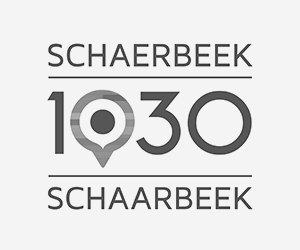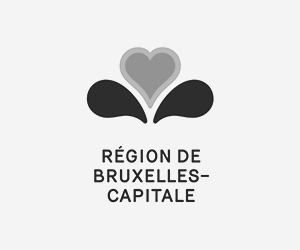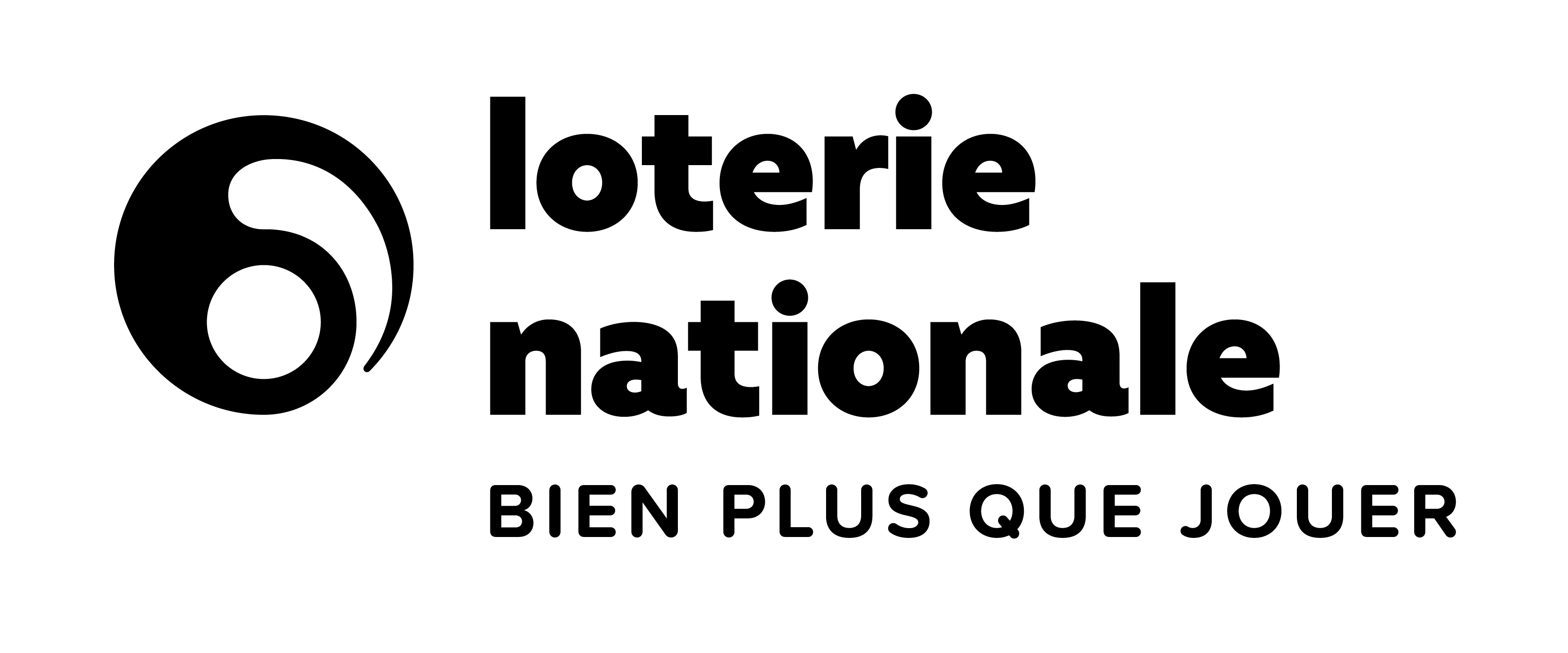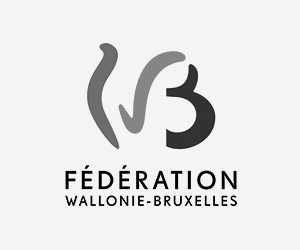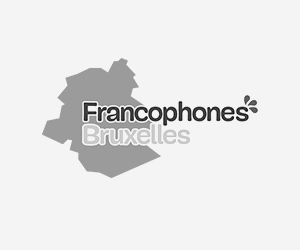The Autrique house
Address
Chaussée de Haecht 266
1030 Schaerbeek
Belgium
Opening hours
From Wednesday to Sunday,
From 12pm to 6pm
(last admission at 5.30 pm)
Closed on bank holidays
Reservations are not required for individual visits.
Prices
Full price: € 9.00
Senior citizens, students, job seekers: € 6.00
Children, Schaerbeek residents: € 3.00
Article 27: € 1.25 + ticket
ICOM, museumPASSmusées, Brussels Card, Art Nouveau Pass: free
COME AND DISCOVER
History of Autrique house
The Maison Autrique (Horta 1893) is an important milestone of Art Nouveau. It has undergone an exemplary restoration. Now open to the public, it allows everyone to better understand the historical and aesthetic interest of Brussels' old houses. During your visit, you will discover exhibition spaces, a small thematic bookshop and an original scenography by Benoît Peeters and François Schuiten.
Support the Autrique house
Would you like to actively participate in the life of the Maison Autrique? Would you like to encourage and participate in the development of the museum's scientific and cultural activities? Then become a Friend of the Maison Autrique!
Victor Horta
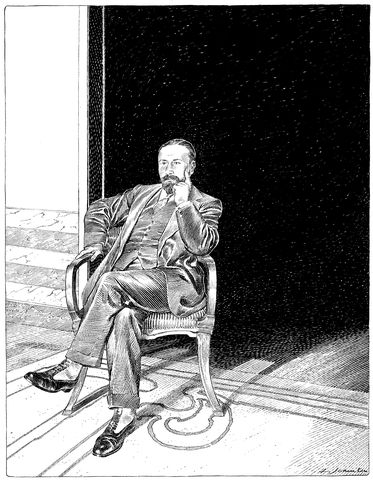 In 1893 Horta was 32 years old. Following his internship with Alphonse Balat, the design of several houses in Ghent and several other projects, his friend Eugene Autrique, an engineer at Solvay, asks him to design a house for him. Autrique's demands were simple: “not a single luxury, not a single extravagance: an inhabitable basement-floor, a dignified vestibule and staircase hall, the living and dining room nicely connecting, a first floor with bath and toilet (which wasn't common in those days) and a second floor for children and servants.” (V. Horta, Memoirs, p. 31) The chosen lot was situated on the Chaussée d'Haecht, at number 236 (today it's n° 266), which was purchased on a public sale by Horta himself. It would be the first manor-house designed by Victor Horta. We can already see elements that form a part of the continual explorations of the architect: the start of an integration with the street, wall-decorations of varying thickness, co-existing symmetrical and asymmetrical shapes, and then there's his revolutionary usage of metal. At around the same time Horta designs the Tassel Hotel; in the following years he receives a big amount of assignments and the style that will soon become known as Art Nouveau comes into full blossoming. In his memoirs Horta expresses his satisfaction with the house: “he has pleased a friend (…) and delivered an honest achievement” with no input from anybody else. (Memoirs, p.33) Maison Autrique is an essential place of pilgrimage for everybody who loves architecture and especially for aficionado's of Horta's oeuvre.
In 1893 Horta was 32 years old. Following his internship with Alphonse Balat, the design of several houses in Ghent and several other projects, his friend Eugene Autrique, an engineer at Solvay, asks him to design a house for him. Autrique's demands were simple: “not a single luxury, not a single extravagance: an inhabitable basement-floor, a dignified vestibule and staircase hall, the living and dining room nicely connecting, a first floor with bath and toilet (which wasn't common in those days) and a second floor for children and servants.” (V. Horta, Memoirs, p. 31) The chosen lot was situated on the Chaussée d'Haecht, at number 236 (today it's n° 266), which was purchased on a public sale by Horta himself. It would be the first manor-house designed by Victor Horta. We can already see elements that form a part of the continual explorations of the architect: the start of an integration with the street, wall-decorations of varying thickness, co-existing symmetrical and asymmetrical shapes, and then there's his revolutionary usage of metal. At around the same time Horta designs the Tassel Hotel; in the following years he receives a big amount of assignments and the style that will soon become known as Art Nouveau comes into full blossoming. In his memoirs Horta expresses his satisfaction with the house: “he has pleased a friend (…) and delivered an honest achievement” with no input from anybody else. (Memoirs, p.33) Maison Autrique is an essential place of pilgrimage for everybody who loves architecture and especially for aficionado's of Horta's oeuvre.
See also: The Horta Museum
Around Saint-Servais before 1850
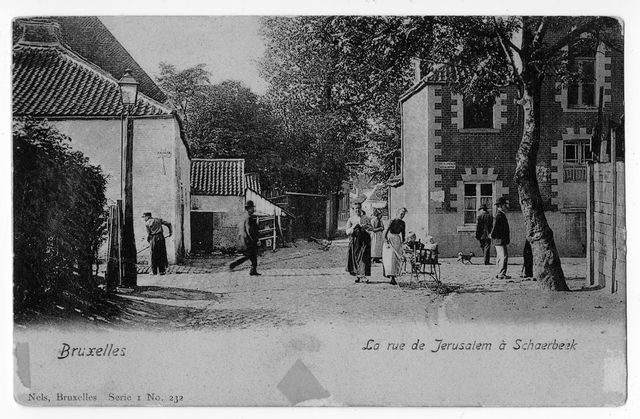 Up until the start of the 19th century Schaerbeek was agrarian: fields, meadows, brooks and windmills. It was famous for its ‘cerises du nord' (small cherries with a sour taste and large pips) which are used to brew Kriek Lambiek beer. The Chaussée de Haecht, the eldest connecting road, had been metalled in 1459. Throughout the ages it formed an important axis for the exchanges between city and countryside; the Church of St-Servais, which was situated slightly lower, also played an important part.
Up until the start of the 19th century Schaerbeek was agrarian: fields, meadows, brooks and windmills. It was famous for its ‘cerises du nord' (small cherries with a sour taste and large pips) which are used to brew Kriek Lambiek beer. The Chaussée de Haecht, the eldest connecting road, had been metalled in 1459. Throughout the ages it formed an important axis for the exchanges between city and countryside; the Church of St-Servais, which was situated slightly lower, also played an important part.
End of XIXE
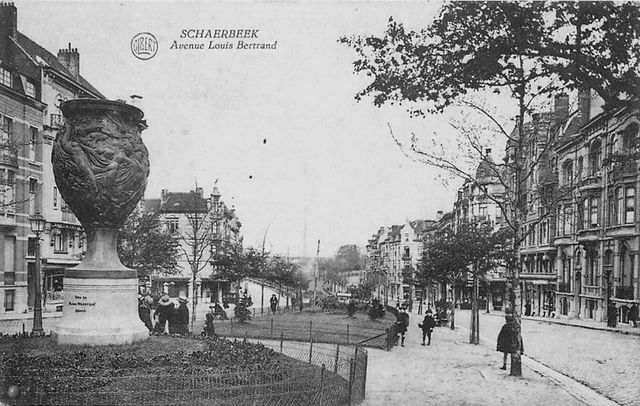 In the middle of the 19th century the neighbourhood of Maison Autrique underwent a dramatic change and started to urbanize. It's rural character disappeared steadily: during the construction of the house the town hall was inaugurated, a horse-drawn tramway was constructed, and many other houses were built. Around this time several industries appear in Schaerbeek: distilleries, playing cards factories, glue factories, varnish factories, iron- and copper-foundries, a rubber factory, not to mention the production of chocolate. The atmosphere in the neighbourhood was without a doubt a bit chaotic during the first years the Autrique family lived in the house. It was during those years that the Avenue Louis Bertrand and numerous adjacent streets were constructed, which were of course surrounded by houses. The Avenue Louis Bertrand has retained a sort of unity, dominated by eclectic architecture; it's where several contemporaries of Horta also got the chance to express their architectural abilities. While taking a walk through the neighbourhood you can admire façades designed by Jacobs, Strauven or Hemelsoet.
In the middle of the 19th century the neighbourhood of Maison Autrique underwent a dramatic change and started to urbanize. It's rural character disappeared steadily: during the construction of the house the town hall was inaugurated, a horse-drawn tramway was constructed, and many other houses were built. Around this time several industries appear in Schaerbeek: distilleries, playing cards factories, glue factories, varnish factories, iron- and copper-foundries, a rubber factory, not to mention the production of chocolate. The atmosphere in the neighbourhood was without a doubt a bit chaotic during the first years the Autrique family lived in the house. It was during those years that the Avenue Louis Bertrand and numerous adjacent streets were constructed, which were of course surrounded by houses. The Avenue Louis Bertrand has retained a sort of unity, dominated by eclectic architecture; it's where several contemporaries of Horta also got the chance to express their architectural abilities. While taking a walk through the neighbourhood you can admire façades designed by Jacobs, Strauven or Hemelsoet.
ST-SERVAIS
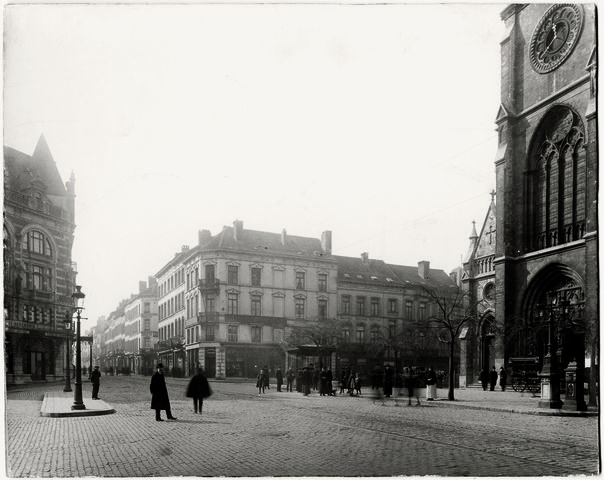 It's an interesting notion that the development of the neighbourhood raised controversies that still have a familiar ring to them. The construction of the avenue for example, brought about the demolition of the church. (The fountain on the central square is the exact point where the centre of the church used to be located) In 1905 the tower, which was a magnificent example of the Roman style, succumbed to the blows of the construction promoters, who didn't care about the protestations of the inhabitants, artists and the press.
It's an interesting notion that the development of the neighbourhood raised controversies that still have a familiar ring to them. The construction of the avenue for example, brought about the demolition of the church. (The fountain on the central square is the exact point where the centre of the church used to be located) In 1905 the tower, which was a magnificent example of the Roman style, succumbed to the blows of the construction promoters, who didn't care about the protestations of the inhabitants, artists and the press.
The dwellers
1893-1907
Eugène Autrique was the oldest of four. A graduate in mechanical engineering, he had recently been given a chair at the École Polytechnique, a department in Brussels Université Libre. He was a colleague of Emile Tassel, whom he also knew through the Masonic lodge of the “Amis Philanthropes”. The Autriques were not that rich, and it has gone on record that Horta scaled down his fees in order to be able to use his chosen materials. The house, though modest in the eye of the architect, was quite big enough for a small family: the Autrique couple had one son and would have no more children. They moved in during the year 1895, and lived there for about twelve years. It is more than likely that the chores went to a servant living in-house in the attic. All in all, the Autriques are representative of that century’s middle-class families, with personal histories pretty much in line with contemporary life. Engineer Autrique’s life may well have been be to intents and purposes conventional but he was surrounded by a crowd of uncles, aunts and cousins, artists or industrialists, taking the name to the ends of the world, to Mexico or the Congo. Eugène Autrique’s travels took an other form, for instance in his capacity as secretary of Constantinople Gas Company, or of the “Société Anonyme Luxembourgeoise des Chemins de Fer et Minières Prince Henri”, the forerunner to the current Luxembourg Railways, whilst being in charge of graphic design and topography at the Université Libre. For obscure reasons, the family parted with the house in the autumn of 1907, when it was sold as the Autriques moved to Tervuren, on the outskirts of Brussels. They lived in a detached house surrounded by a magnificent garden. Unfortunately, Eugène Autrique had to resign his chair on grounds of ill-health in 1912: he was to die a few months later.
1907-1943
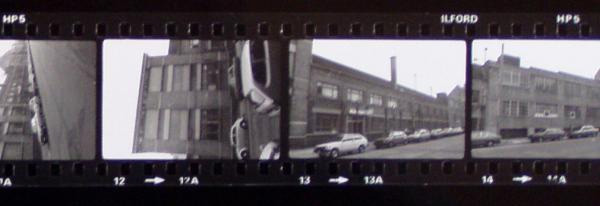 The new incumbent of 266 Chaussée de Haecht was named Alfred Duchateau: he was a young engineer from the Centre of the country, whose family had made its fortune in the steel industry. Having left the family seat at the Groseillon, he settled in Brussels to set up in Schaerbeek “Les Meules Duchateau” (a Millstones business). His workshops were situated near the station, a matter of minutes away from his new house. Under the impulse of its founder, the small plant grew exponentially: the factory would gradually takeover the whole street block with a workforce of 150. Alfred and his family would not spend much time in Maison Autrique: at the onset of the Great war, the family left the country, some for the UK, some for France. Soon his younger brother, Edmond, moved in and was so taken with the house that he bought it in 1922. As did happen fairly often at the time, the brothers married two sisters: Alfred married Denise and young Edmond Magdeleine Hiart. The latter, the new owner, was not a hard worker like his elder brother, he preferred golf and hunting to the running of the family business. He would mainly deal with the department of research and development of millstones, leaving the management side to his nephew. At the end of the thirties, three generations were living in Maison Autrique: Edmond and Magdeleine were grand-parents, and shared their home with their children and grand-children not forgetting the youngest’s nanny. Through inheritance, the house remained the property of the Duchateau-Hiart family from 1907 to 1986 but its members would only live in it just over thirty years, all told. for, along with many people in Belgium, Edmond and Magdeleine Duchateau took to the roads upon its invasion in June1 1940. They abandoned the house to take refuge in Brittany, in Carnac; on their return, a few months later, they settled in Watermael-Boitsfort, south of Brussels, preferring its more airy environment to Chaussée de Haecht. The Maison Autrique would remain empty from that date to 1943.
The new incumbent of 266 Chaussée de Haecht was named Alfred Duchateau: he was a young engineer from the Centre of the country, whose family had made its fortune in the steel industry. Having left the family seat at the Groseillon, he settled in Brussels to set up in Schaerbeek “Les Meules Duchateau” (a Millstones business). His workshops were situated near the station, a matter of minutes away from his new house. Under the impulse of its founder, the small plant grew exponentially: the factory would gradually takeover the whole street block with a workforce of 150. Alfred and his family would not spend much time in Maison Autrique: at the onset of the Great war, the family left the country, some for the UK, some for France. Soon his younger brother, Edmond, moved in and was so taken with the house that he bought it in 1922. As did happen fairly often at the time, the brothers married two sisters: Alfred married Denise and young Edmond Magdeleine Hiart. The latter, the new owner, was not a hard worker like his elder brother, he preferred golf and hunting to the running of the family business. He would mainly deal with the department of research and development of millstones, leaving the management side to his nephew. At the end of the thirties, three generations were living in Maison Autrique: Edmond and Magdeleine were grand-parents, and shared their home with their children and grand-children not forgetting the youngest’s nanny. Through inheritance, the house remained the property of the Duchateau-Hiart family from 1907 to 1986 but its members would only live in it just over thirty years, all told. for, along with many people in Belgium, Edmond and Magdeleine Duchateau took to the roads upon its invasion in June1 1940. They abandoned the house to take refuge in Brittany, in Carnac; on their return, a few months later, they settled in Watermael-Boitsfort, south of Brussels, preferring its more airy environment to Chaussée de Haecht. The Maison Autrique would remain empty from that date to 1943.
1943-1986
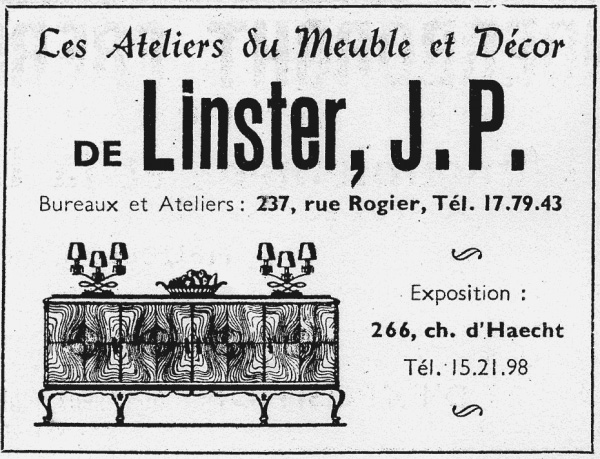 Half way through the war, cabinet-maker Jean-Pierre Linster rented the house. The ground floor and the first floor were converted into showrooms for the furniture manufactured in workshops set a few streets further whilst the basement and the second floor continued to serve as housing quarters. The maid-servant had a room fixed up in the attic. Not by chance did the cabinet-maker’s choice fall on Maison Autrique: he had heard of Victor Horta and rightly thought that the house offered just the right setting for his top of the range furniture products. Over those years, the house had a double life the strands of which rarely met. To the slow rhythm of the shop section was superposed the rhythm of everyday life. Home life was most peculiar with the kitchen-basement and the second floor inhabited by the family, whilst the fine rooms of the ground and first floor were devolved to the display of furniture. The place proved a wonderful playground for the owners’ daughter. She and her husband were to take over the running of the shop in 1975. This was the most stable period the house lived through: forty quiet years spent welcoming customers. The Linsters left the premises 1986, to settle in its immediate neighbourhood as Maison Autrique changed hands again.
Half way through the war, cabinet-maker Jean-Pierre Linster rented the house. The ground floor and the first floor were converted into showrooms for the furniture manufactured in workshops set a few streets further whilst the basement and the second floor continued to serve as housing quarters. The maid-servant had a room fixed up in the attic. Not by chance did the cabinet-maker’s choice fall on Maison Autrique: he had heard of Victor Horta and rightly thought that the house offered just the right setting for his top of the range furniture products. Over those years, the house had a double life the strands of which rarely met. To the slow rhythm of the shop section was superposed the rhythm of everyday life. Home life was most peculiar with the kitchen-basement and the second floor inhabited by the family, whilst the fine rooms of the ground and first floor were devolved to the display of furniture. The place proved a wonderful playground for the owners’ daughter. She and her husband were to take over the running of the shop in 1975. This was the most stable period the house lived through: forty quiet years spent welcoming customers. The Linsters left the premises 1986, to settle in its immediate neighbourhood as Maison Autrique changed hands again.
1986-1996
The last owner reluctantly accepted to part with it for a couple of artists who wished to return it to its former glory. The new owners immediately fell in love with the house. They had soon set in train a first restoration project the first outwards sign of which was a grand cleaning of the facade. Message received by tourists who flocked back to the house in the wake of renewed interest in Art Nouveau. At the same time, the walls and columns were the object of a first investigation; this loving interest gave rise to an in-depth study. The funding it pointed to unfortunately just could not be found. The couple’s activities regularly took them away from Brussels, and that empty house was an easy target for robbers. The couple fixed an alarm, secured the doors and more importantly offered the use of the place to a friend freshly arrived from abroad. This last tenant would act as a caretaker for a few months from February 1993 on. But life in a large house perhaps a little dark is not everyone’s cup of tea: she would return her key in December of the same year.
The Autrique house
Address
Chaussée de Haecht 266
1030 Schaerbeek
Belgium
Opening hours
From Wednesday to Sunday,
From 12pm to 6pm
(last admission at 5.30 pm)
Closed on bank holidays
Reservations are not required for individual visits.
Prices
Full price: € 9.00
Senior citizens, students, job seekers: € 6.00
Children, Schaerbeek residents: € 3.00
Article 27: € 1.25 + ticket
ICOM, museumPASSmusées, Brussels Card, Art Nouveau Pass: free

